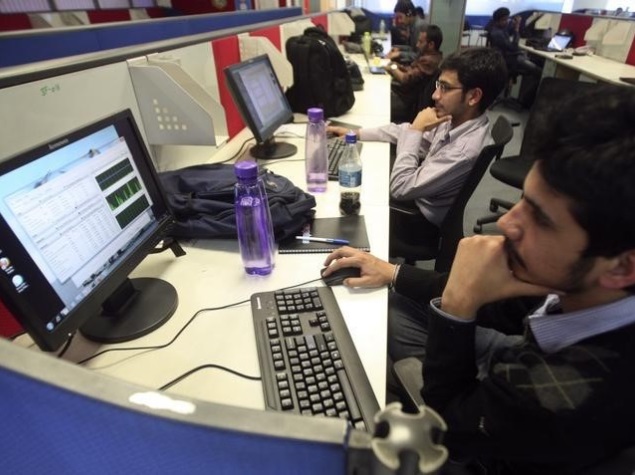- Home
- Internet
- Internet News
- India Calls for Action on Twin Digital Divides at UN
India Calls for Action on Twin Digital Divides at UN

India has called on the international community to tackle the twin digital divides - that between developed and developing nations and that between men and women in developing countries.
While "growth of information and communications technologies (ICT) over the past decade has exceeded all expectations," India's Ambassador to the UN Asoke Kumar Mukerji said Monday, the digital divide continued.
"A more significant facet to this digital divide," he said, was that in low-to-medium income countries fewer women had access to the Internet compared to men. "This lack of access is giving rise to a second digital divide, one where women and girls risk being left further and further behind," he warned.
Mukerji was speaking at a session of the UN General Assembly's Economic and Financial Committee on information and communications technologies for development, where he also reiterated that "as a multi-cultural, multi-ethnic and democratic society", India was fully committed "to the free growth of the Internet".
Underlining the gender digital divide, Mukerji cited statistics from the International Forum on Women, ICT, and Development convened by the US State Department last year in Washington, which said that women were 23 percent less likely than men to use the Internet in low-to-medium income countries.
Invoking the "transformative potential of the 'mouse'", Mukerji said that "by applying enhanced ICT for women in education, healthcare, clean drinking water, and energy, we can significantly empower their role as force-multipliers in society".
(Also See: Google Partners With Andhra Pradesh for State's IT Vision)
He held out the "Digital India" programme as an example of how to work towards this goal.
"To overcome digital divide and enable the penetration of internet in the rural areas, the programme envisages the provision of high-speed internet as a core utility in all village assemblies. It will promote universal digital literacy and cradle-to-grave digital identity. It will enhance e-governance through the provision of all government services in real time from online and mobile platforms."
A report by Irina Bokova, the director-general of Unesco, presented at the meeting cited two examples of how ICT was used in India to enhance social development. The successful polio vaccination programme that led to India being certified free of the disease was attributed by Unicef to the communication and social mobilisation effort, the report said.
"Several organisations contributed to this historic achievement that addressed mis-perceptions and rumours held by families and communities that refused polio vaccines. The hardest-to-reach children were reached and have eventually been vaccinated."
The other example cited in the report is that of the "Child Survival and Development for Every Child in India" programme.
(Also See: BSNL to Focus on NOFN, Wi-Fi Hotspots and More in 'Digital India' Drive)
The report said, "Unicef strengthened the capacity of state governments to develop communication strategies for social and behaviour change in support" of the goals "and developed a communication for development curriculum, in collaboration with 10 leading Indian universities".
Addressing another major issue before the digital world, Mukerji said: "The international management of the internet should be multilateral, transparent and democratic. As a global common, cyber space cannot be managed only as private property. The governance and architecture of internet should reflect its global and democratic nature."
Currently, the US Department of Commerce oversees the internet domain system through the Internet Corporation for Assigned Names and Numbers (Icann), a California-based subcontractor. The domain system it coordinates is the tool that assigns internet addresses. The US has indicated that it would not renew the contract with Icann when it runs out next September. There are several initiatives afoot for an international body to assume the role.
Get your daily dose of tech news, reviews, and insights, in under 80 characters on Gadgets 360 Turbo. Connect with fellow tech lovers on our Forum. Follow us on X, Facebook, WhatsApp, Threads and Google News for instant updates. Catch all the action on our YouTube channel.
Related Stories
- Samsung Galaxy Unpacked 2025
- ChatGPT
- Redmi Note 14 Pro+
- iPhone 16
- Apple Vision Pro
- Oneplus 12
- OnePlus Nord CE 3 Lite 5G
- iPhone 13
- Xiaomi 14 Pro
- Oppo Find N3
- Tecno Spark Go (2023)
- Realme V30
- Best Phones Under 25000
- Samsung Galaxy S24 Series
- Cryptocurrency
- iQoo 12
- Samsung Galaxy S24 Ultra
- Giottus
- Samsung Galaxy Z Flip 5
- Apple 'Scary Fast'
- Housefull 5
- GoPro Hero 12 Black Review
- Invincible Season 2
- JioGlass
- HD Ready TV
- Laptop Under 50000
- Smartwatch Under 10000
- Latest Mobile Phones
- Compare Phones
- Realme P4x 5G
- OnePlus Ace 6T
- OPPO A6x 5G
- Samsung Galaxy Z TriFold
- Poco F8 Ultra
- Poco F8 Pro
- Huawei Mate 80 RS Master Edition
- Huawei Mate 80 Pro Max
- Asus ProArt P16
- MacBook Pro 14-inch (M5, 2025)
- Poco Pad M1
- Poco Pad X1
- Just Corseca Skywatch Pro
- Honor Watch X5
- Acerpure Nitro Z Series 100-inch QLED TV
- Samsung 43 Inch LED Ultra HD (4K) Smart TV (UA43UE81AFULXL)
- Asus ROG Ally
- Nintendo Switch Lite
- Haier 1.6 Ton 5 Star Inverter Split AC (HSU19G-MZAID5BN-INV)
- Haier 1.6 Ton 5 Star Inverter Split AC (HSU19G-MZAIM5BN-INV)
















